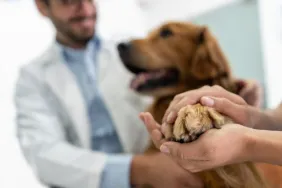
Video: Owner Shows Golden Retriever Copying Corgi
If you live with someone long enough, you start to pick up their habits. It’s true for couples, roommates, and apparently, dogs. In one household, the older sibling just so happens to be a sassy little Corgi, and her younger, much larger brother is doing everything he can to walk (and loaf) in her tiny paw prints. While the attempt is admirable, it’s also hilariously misinformed.








